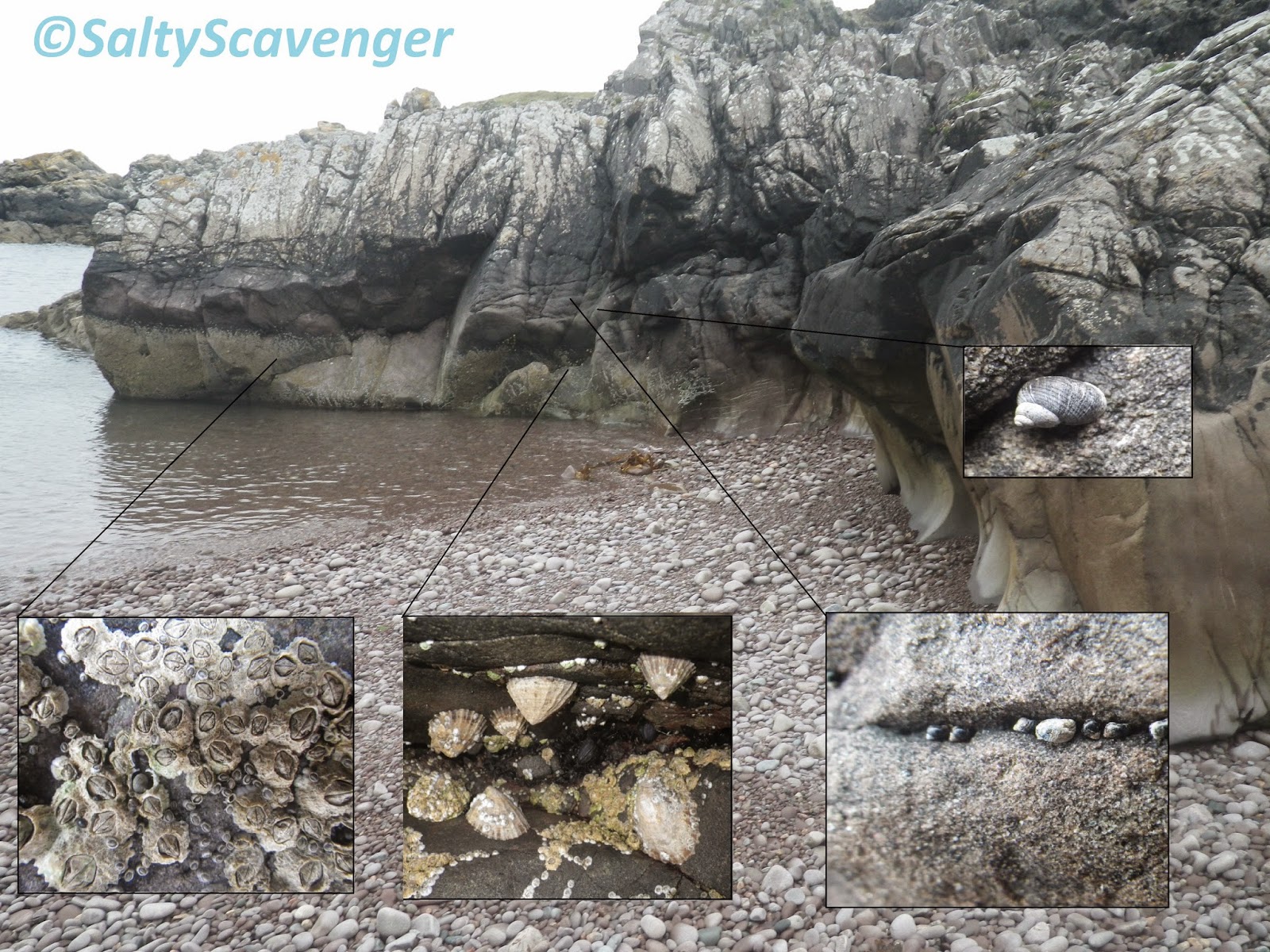The cobbles support little wildlife, that which does occur is concentrated within the strand line.
The stable cliffs support a community typical of high energy environments with barnacles, limpets, periwinkles, dog whelks and anemones.
Habitat classification:
Biotope complex
|
LR.HLR. MusB (Mussel and/or barnacle
communities)
|
LR.FLR.Lic.(Lichens on supralittoral
and littoral fringe rock).
|
LS.LSa (Littoral sand)
|
|
Biotope
|
LR.FLR.Lic.Ver (Verrucaria Maura on
littoral fringe rock)
|
LR.FLR.Lic.YG (Yellow and grey
lichens on supralittoral rock)
|
LS.LSa.St (Strandline)
|
|
 |
| The rocky shore is made up of an exposed cobble beach and surrounding cliffs. Habitat classification: LR.HR (High energy littoral rock) |
 |
| Small periwinkles (M. neritoides) within the V. maura community. |
 |
| Rough periwinkle (L. saxatilis agg) and small periwinkle (M. neritoides) |
 |
| Rough periwinkles (L. saxatilis agg.) seek refuge within a crevice. |
 |
| Barnacles and rough periwinkles (L. saxatilis agg.) with in the barnacle community. |
 |
| Barnacles |
 |
| Common limpets (Patella vulgata) and barnacles |
 |
| Dog whelks (Nucella lapillus) and barnacles with patches of V maura |
 |
| Dog whelks (N. lapillus) and barnacles |
 |
| Beadlet anemones (Actina equina) and barnacles. |
 |
| The strandline is made up of old seaweed, drift wood, plastic bouys and birch bark from the North. |




No comments:
Post a Comment